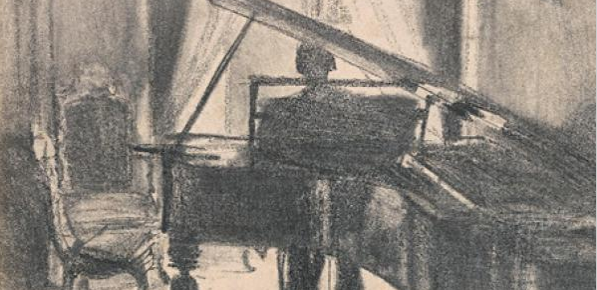
Over the next four weeks, author John MacAuslan, author of Schumann’s Music and E. T. A. Hoffmann’s Fiction, will explore why music is important.
One after another, Schumann wrote great piano works apparently connected to literature –Carnaval, Fantasiestücke, Kreisleriana, Nachtstücke. But how connected?
I couldn’t believe the connection was primarily about programmes. Nor primarily about formal or stylistic parallels (which have been rather too fashionable in recent decades). Nor did it seem merely trivial or decorative.
So what was left? ‘Everything’, was my instinctive answer.
The book tries to make sense of that answer. But first we must make sense of the works as music. How does each form a whole? What’s the nature of the musical patterns distinguishing each? Despite the works’ wide and deep appeal, such questions have had little attention.
Perhaps Hanslick’s 1846 comment on them hits the spot: ‘too interior and too strange,…too deep, too simple, too sharp, and too dry’ (though we might not all agree with his ‘too’).
And in 1861, Adolf Schubring judged their difficulty was due less to ‘form’ than to ‘the closed book’ of their content. Whatever you think about that form / content distinction, he too seems to be onto something.
Let’s take a round-about route into Kreisleriana.
English children might be forgiven for thinking Bach borrowed ‘Twinkle Twinkle Little Star’ to end his ‘Goldberg’ Variations:
It’s the same basic tune, but here it’s actually a comic German song complaining about mother’s cooking – all those cabbages and turnips. There’s a French version of the tune too, ‘Ah vous dirai-je maman’. Plenty of composers, including Mozart, wrote variation sets on that, some of them so fatuous that the early 19th-century author and music critic E. T. A. Hoffmann used them as the epitome of trivial music.
In his eccentric essays, Kreisleriana, party-goers press Kreisler to play a score he’d left under his hat. They think it’s ‘Ah vous dirai-je maman’, and want it as wallpaper while they gossip and play cards; actually it’s his beloved ‘Goldbergs’.
‘Right then’, thinks Kreisler, ‘you’ve asked for it’; and plays the Bach all the way through, ending with streams of his own improvisations on the piece shown above.
It sums up the clash between the trivial and the profound, the commodity and the individual, the philistine world and a lonely artist.
Can we hear anything of that tune, or of the ‘Goldbergs’, in Schumann’s 1838 Kreisleriana? If so, might it be a clue – leading us into a dense web of musical patterns, a powerful and distinctive musical shape, and for that reason multiple resonances with Hoffmann’s Kreisleriana essays?
Or again, how are we to understand Schumann’s 1839 Nachtstücke?
The literary work that to Sigmund Freud encapsulated ‘the uncanny’ was Hoffmann’s ‘Der Sandmann’. This tale, with its compulsive repetitions, and fixations on the deathly and the robotic, comes from a collection called Nachtstücke. Might such syndromes figure in Schumann’s Nachtstücke? All four pieces are rondos; in three of them, deathly, mechanical or coarse refrains repeatedly shut down more supple, flowing, human episodes.
So does this, or any, music have ‘a meaning’, or express something? A simple answer, either ‘yes’ or ‘no’, seems wrong.
Schumann’s culture wrestled with that conundrum too. They explored music as language, or meaning, metaphor, narrative or thought, and at the same time as not quite any of those.
I think their insights have something to offer us.
Next week, we will discuss Adolph von Menzel.
Latest Comments
Have your say!